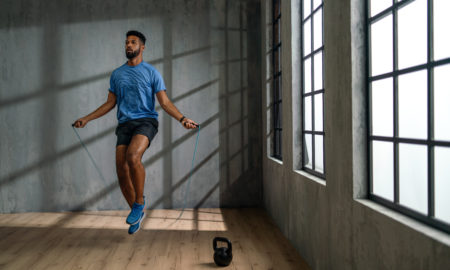Concussions—also known as mild traumatic brain injuries or mTBI—are a very serious matter. You read or hear about them everywhere these days. “60 Minutes” presented a segment on the cumulative brain injuries of NFL players, now called chronic traumatic encephalopathy. Newspaper sports sections are filled with stories about players who can’t play due to concussions—as are the nightly TV sports reports. Every year we hear about high school and college football players who die from complications of concussions.
You may wonder what that has to do with weight training and why it’s being addressed here. The answer is quite simple: This magazine has a diverse readership, including professional and amateur bodybuilders, powerlifters, weightlifters, football players at all levels, coaches and parents of athletes. The vast majority train heavy.
The study of concussions is an evolving body of research. Seven concussion guidelines have been issued in the past 20 years. Today we use the most recent guidelines, which come from the 3rd International Conference on Concussion in Sport, held in Zurich in 2008.
In years past concussed athletes were kept active so they wouldn’t lose their conditioning while they recovered. Most coaches, doctors, athletes and parents instinctively knew the athletes could not be hit, tackled or checked while concussed. They were, however, asked to ride stationary bikes, lift weights and soon thereafter to run. They may have been kept from power cleans, but they would perform bench presses, pulldowns, squats or curls. Many concussed athletes became dizzy or experienced headaches when they exerted themselves, and that would cause them to limit training and activities. Other athletes didn’t have those obvious symptoms and would continue to train.
Old, incorrect thoughts still exist in the coaching world regarding concussions. Many parents, coaches and athletes think that it’s normal for young football players to “get their bell rung” in a game. Many think it’s no big deal. Truth is, when a player has his or her “bell rung,” it’s a concussion. The athlete should not continue to play, practice, run or lift weights until all the symptoms have stopped for at least two weeks. Physical activity may delay the recovery of concussed athletes, and they should not train to maintain fitness.
One of the conclusions that came from the Zurich conference is the concept of cognitive rest. Not only must athletes stop training, running, practicing and playing, but they must allow the brain to have more complete rest as well. That means no television, no video games, no texting, no reading and no studying. The brain activity from those pursuits may also delay recovery.
Women are more susceptible to concussions. That’s believed to be due in part to the lower muscle mass in their neck and upper back. Children and young people are believed to be even more vulnerable because of their developing brains. Concussed children are often removed from school following a concussion to allow for cognitive rest.
William Moreau, D.C., Diplomate of the American Chiropractic Board of Sports Physicians and Director of the Sports Medicine Clinics for the Olympic Training Centers, lectures on the diagnosis and management of concussions throughout the country each year. Moreau adds to the important topic of the timing of training with concussed athletes: “All head injuries are important regardless if the initial injury occurred during sport, training activities or just everyday activities. One of the more common sources of concussion is motor vehicle accidents. An important key for people to safely return to training after a head injury is to make sure the symptoms are completely resolved, including no pain with physical activities like lifting. For example, if you experience headache after an injury that is only noted or increased by weight training, you need to be evaluated for a more serious head injury. Your life could depend upon it.”
Moreau administers a Web site, DConline.cc, which carries multidisciplinary topics for health-care professionals and has recently added a lay presentation on concussions.
I realize that this installment was a little different from most of my columns, but it’s an important topic.
Editor’s note: Visit www.SoftTissueCenter.com for reprints of Horrigan’s past Sportsmedicine columns that have appeared in IRON MAN. You can order the books Strength, Conditioning and Injury Prevention for Hockey by Joseph Horrigan, D.C., and E.J. “Doc” Kreis, D.A., and The 7-Minute Rotator Cuff Solution by Horrigan and Jerry Robinson from Home Gym Warehouse, (800) 447-0008, or at www.Home-Gym.com.




















You must be logged in to post a comment Login